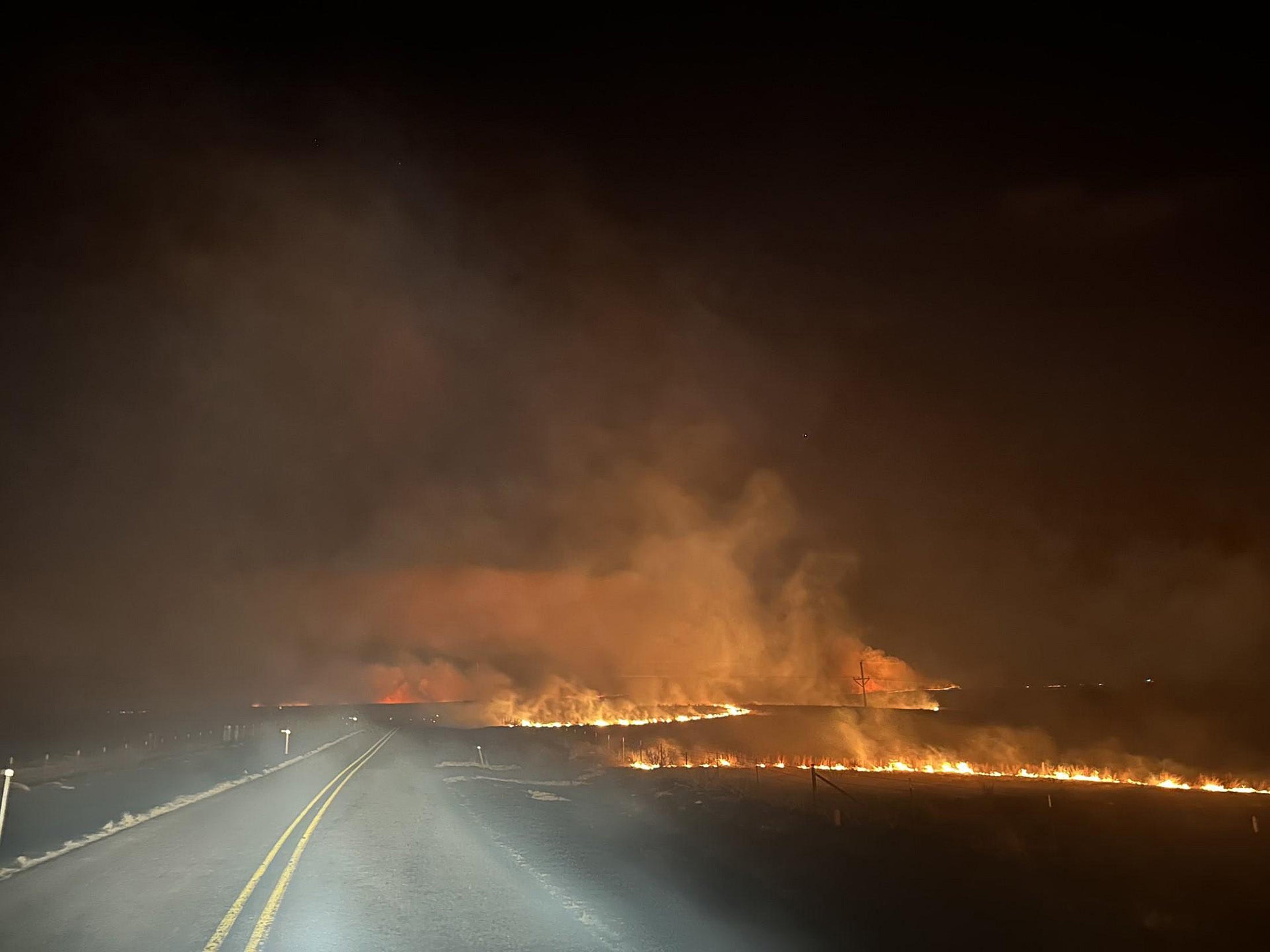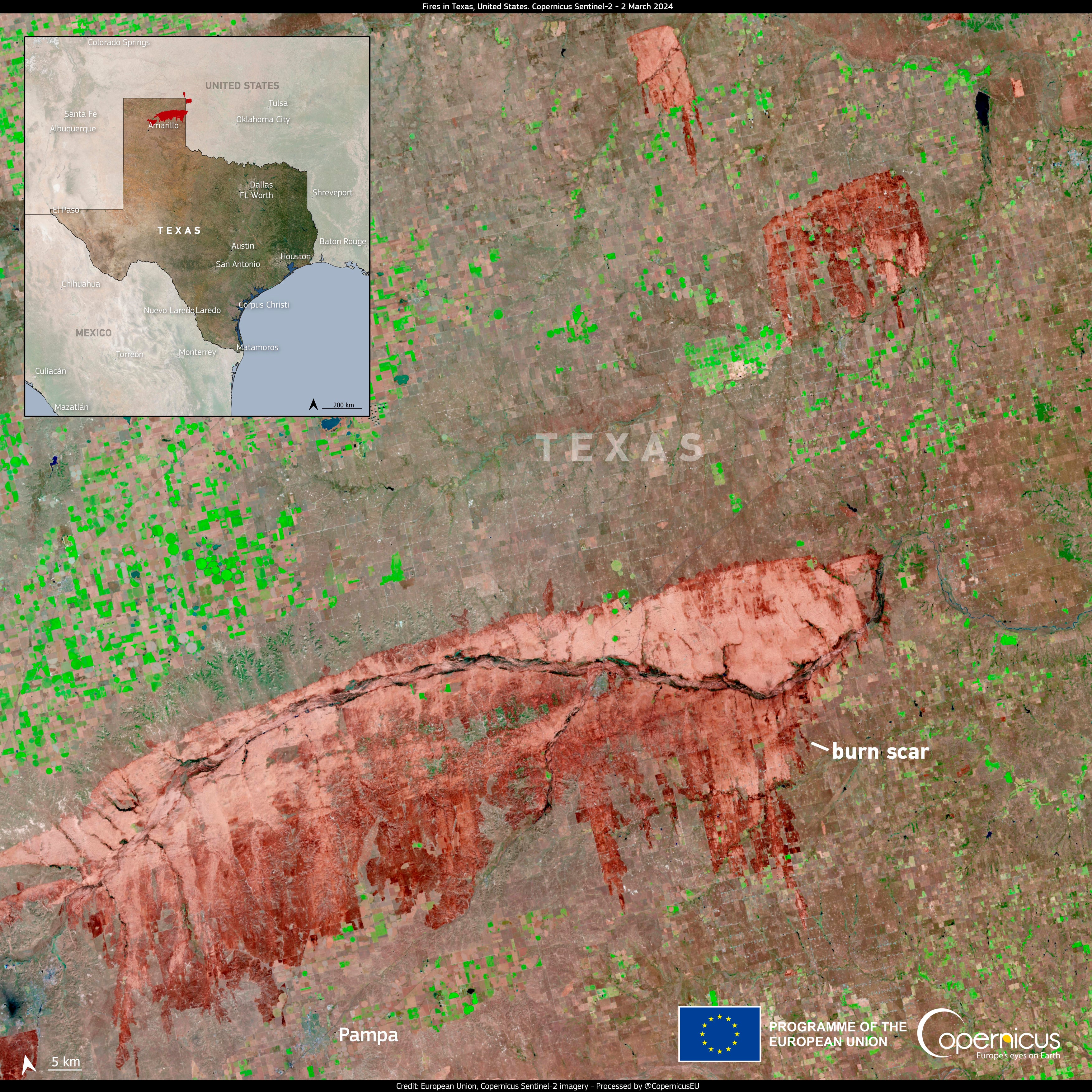Red flag warnings across US south as more heat and drought threaten to kick up Texas Panhandle fire
Smokehouse Creek fire became largest fire in Texas state history at end of February
Dry, gusty winds and high temperatures raised the risk of wildfire across southern and central parts of the United States on Monday.
Red flag warnings were in place for New Mexico, Oklahoma, Colorado, Kansas, Nebraska, Iowa, Minnesota, South Dakota and Wyoming, according to the National Weather Service (NWS).
Parts of Texas also posted red flag warnings, including in the Panhandle, where the conditions threatened to kick up the Smokehouse Creek fire, now largely under control.
The largest fire in state history was 89 per cent contained, Texas A&M Forest Service reported on Monday.
Smokehouse Creek fire engulfed nearly 486,000 hectares of land within days at the end of February, and led Texas Governor Greg Abbott to declare a state of disaster in 60 counties.

At least two people were killed, dozens of homes burned and thousands of acres of agricultural lands destroyed.
A Texas power company admitted last week that its equipment may have sparked the Smokehouse Creek fire. In a statement released on Thursday, Xcel Energy said that it had been cooperating with the investigations into the wildfires, while also carrying out its own review.
“Based on currently available information, Xcel Energy acknowledges that its facilities appear to have been involved in an ignition of the Smokehouse Creek fire,” the statement read.
“Xcel Energy disputes claims that it acted negligently in maintaining and operating its infrastructure; however, we encourage people who had property destroyed by or livestock lost in the Smokehouse Creek fire to submit a claim to Xcel Energy through our claims process.”
Locals had accused the company of being responsible for the fire, claiming that a wooden utility pole near the town of Stinnett was blown over by strong winds and then set fire to dry grass and brush.
While the cause of the fires remain under investigation, around the world, larger, more intense, and erratic fires are being fuelled by extreme heat and drought. These conditions are linked to the climate crisis, caused largely by greenhouse gas emissions from decades of burning fossil fuels.

The low humidity and gusts prompted critical risk of fire weather across a good portion of central Plains into the Texas Panhandle and a portion of eastern Wyoming on Monday, forecasters said. Fire weather concerns will shift into the southern High Plains on Tuesday and Wednesday.
Alongside the dry conditions and winds, above-normal temperatures are on the way for large stretches of the country.
The Upper Midwest and Great Lakes region is expected to break some record daily maximum temperatures on Tuesday.
Across the Ohio Valley and up into the Northeast, temperatures will range from the 60s to low 70F, 15-25 degrees above mid-March averages.
The warmer weather brought the threat of thunderstorms across the central US, including possible severe outbreaks in eastern Oklahoma and Kansas into western Missouri from Tuesday into Wednesday.
Join our commenting forum
Join thought-provoking conversations, follow other Independent readers and see their replies
Comments